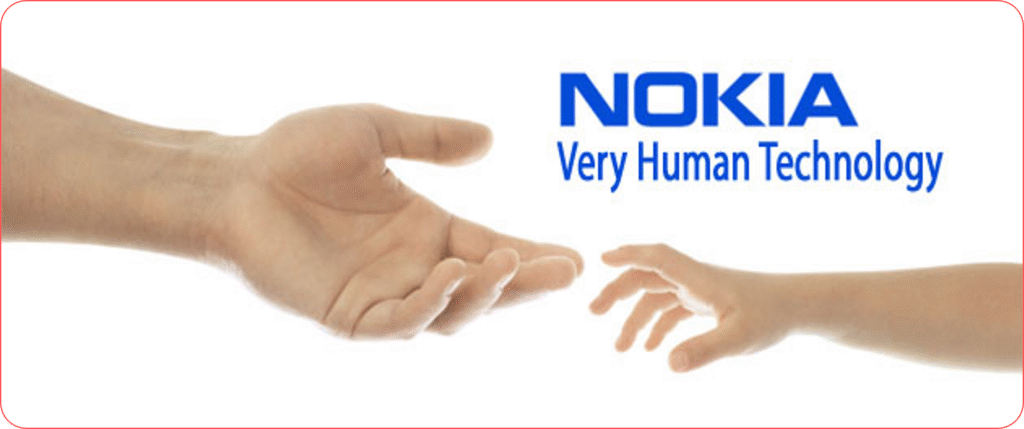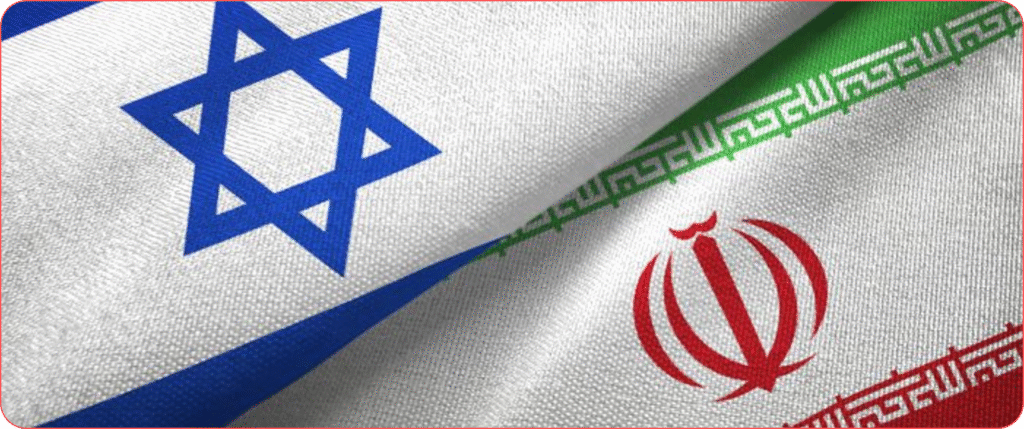Once, the name Nokia was synonymous with mobile phones. It was a household name, a symbol of durability, innovation, and global connectivity. From the iconic “Nokia Tune” ringtone to the indestructible 3310, Nokia devices were everywhere, shaping how millions communicated and interacted with the world. But the mighty have fallen, and Nokia’s story is a compelling, yet cautionary, tale of a titan’s rise, a dramatic decline, and its ongoing journey of reinvention.
The Rise to Unprecedented Heights: A Finnish Phenomenon
Nokia’s roots trace back to 1865, starting not as a tech company, but as a paper mill in Finland. Over decades, it diversified into various industries, including rubber products, cables, and electronics. The pivotal shift came in the 1960s and 70s as Nokia ventured into telecommunications, laying the groundwork for its future mobile empire. They pioneered early car phones and contributed significantly to the development of cellular networks.
The 1990s marked Nokia’s explosive ascent. A strategic decision in 1992 to focus almost exclusively on mobile phones and telecommunications infrastructure proved to be a masterstroke. Nokia wasn’t just making phones; they were defining the mobile experience. Phones like the Nokia 1011 (the first commercially available GSM phone), the 2100 series with its famous Nokia Tune, and later, the virtually indestructible Nokia 3310, became cultural phenomena.
Nokia’s success was built on several pillars:
- Engineering Prowess and Durability: Nokia phones were renowned for their robust build quality and reliability. They could withstand drops and everyday wear and tear, earning them a legendary status for being “unbreakable.”
- Intuitive User Interfaces: The Symbian operating system, prevalent in Nokia’s feature phones, was simple, user-friendly, and accessible to a global audience, regardless of their tech literacy.
- Mass Market Appeal and Localization: Nokia skillfully adapted its products for diverse markets, offering features and designs that resonated with local cultures and tastes. This focus on localization, even translating user interfaces and marketing materials, helped them penetrate emerging markets with unprecedented success.
- Efficient Supply Chain and Economies of Scale: Nokia’s ability to manufacture and distribute millions of phones globally at competitive prices gave them a significant advantage.
By the late 1990s and early 2000s, Nokia’s dominance was absolute. In October 1998, Nokia became the best-selling mobile phone brand in the world. At its peak, Nokia commanded an astounding 40% of the global mobile phone market share in 2007, shipping more units than its three closest rivals combined. Their operating profit soared from $1 billion in 1995 to nearly $4 billion by 1999. The Nokia 1100, launched in 2003, remains one of the best-selling mobile phones of all time, selling over 250 million units.
The Tremors of Change: What Happened to the Giant?
Nokia’s reign seemed invincible, but beneath the surface, tectonic shifts were occurring in the mobile landscape. The year 2007, ironically the same year Nokia reached its peak market share, also marked the unveiling of Apple’s iPhone. This moment was not just a product launch; it was a paradigm shift that Nokia, unfortunately, failed to fully grasp.
The reasons behind Nokia’s dramatic fall are multifaceted and serve as a stark reminder of the perils of complacency and resistance to change:
- Underestimation of the Smartphone Revolution: Nokia’s most critical misstep was its slow and hesitant embrace of the smartphone era. While Apple introduced a device with a revolutionary touchscreen interface and a burgeoning app ecosystem, Nokia largely clung to its tried-and-tested Symbian operating system and hardware-driven approach. They initially believed touchscreens were a niche, and physical keyboards would remain superior. This fundamental misreading of consumer trends proved fatal.
- Over-reliance on Outdated Symbian OS: Symbian, while successful for feature phones, was simply not designed for the rich, interactive experiences demanded by smartphones. It was clunky, lacked a robust developer ecosystem, and struggled to compete with the fluidity and app-centricity of iOS and later, Android. Nokia’s attempts to upgrade Symbian or develop alternative platforms like MeeGo were too little, too late, and often plagued by internal conflicts and a lack of unified vision.
- Internal Bureaucracy and Fear: Nokia’s once innovative culture became increasingly bureaucratic and risk-averse. Reports suggest a “culture of fear” within the company, where middle management was hesitant to deliver bad news to top executives, who, in turn, lacked sufficient technical understanding of the evolving market. This stifled innovation and delayed critical decision-making processes.
- Failed Strategic Partnerships: In a desperate attempt to regain relevance, Nokia forged a strategic alliance with Microsoft in 2011, making Windows Phone its primary smartphone operating system. While Windows Phone offered a fresh interface, it struggled to gain significant market traction compared to the rapidly growing Android and established iOS. This partnership ultimately tied Nokia’s fate to a struggling platform, further accelerating its decline.
- Lack of a Cohesive Ecosystem: The smartphone era wasn’t just about hardware; it was about the ecosystem – apps, services, cloud integration. Apple and Google quickly built vast app stores and integrated services that seamlessly connected users. Nokia’s attempts to create its own digital ecosystem (like Ovi) were fragmented and couldn’t compete with the scale and breadth of its rivals.
- Marketing Missteps: Despite its strong brand heritage, Nokia struggled to market its new smartphone offerings effectively. Their advertising often lacked the appeal and distinctiveness that Apple and Samsung successfully leveraged to captivate modern consumers.
By the second quarter of 2013, Nokia’s smartphone market share had plummeted to a mere 3.1%. In 2013, facing severe financial difficulties and a dramatic decline in market value (reportedly 90% in six years), Nokia sold its Devices & Services division, including its mobile phone business, to Microsoft for approximately $7.2 billion. This marked the official end of Nokia as a dominant force in the mobile phone manufacturing world.
Could They Have Ditched It? A Look at Missed Opportunities
Hindsight is 20/20, but several paths could have potentially saved Nokia:
- Embrace Android Early: Perhaps the most significant missed opportunity was Nokia’s reluctance to adopt Android. While they were heavily invested in Symbian, a timely pivot to Android, even in parallel with Symbian development, could have allowed them to leverage Google’s rapidly growing ecosystem and compete directly with Samsung and other Android manufacturers. Their eventual foray into Android with the Nokia X series was too late and lacked conviction.
- Faster Innovation in Symbian: If ditching Symbian wasn’t an option, a far more aggressive and innovative approach to evolving Symbian was needed. This would have required a significant overhaul of the OS to match the touch-centric, app-driven experiences offered by competitors, along with a robust developer outreach program.
- Radical Leadership and Cultural Shift: A willingness to challenge the status quo, make bold decisions, and foster a truly agile and innovative culture could have been crucial. This would have meant shedding bureaucracy and empowering teams to respond quickly to market changes.
- Focus on Niche Markets: If competing directly with Apple and Android proved too challenging, Nokia could have potentially carved out successful niches. Their reputation for durability, for instance, could have been leveraged to dominate the rugged phone market or specialized enterprise devices.
Nokia Today: A Phoenix from the Ashes (in a Different Form)
While the familiar Nokia mobile phone business as we knew it disappeared into Microsoft, the Nokia Corporation itself did not vanish. It underwent a significant transformation, shedding its consumer-facing mobile phone identity to refocus on its core strengths in networking and telecommunications infrastructure.
Current Situation:
Today, Nokia is a leading global technology company focused on networks and telecommunications infrastructure. It’s a key player in:
- Mobile Networks: Nokia is a significant provider of 5G infrastructure, base stations, and related services to telecom operators worldwide. They have focused on improving product competitiveness and gaining market share in 5G.
- Network Infrastructure: This includes IP networks, optical networks, and fixed networks, catering to web-scale companies, enterprises, and governments.
- Cloud and Network Services: Nokia is expanding into areas like enterprise private wireless and other growth segments by leveraging their expertise in cloud and network technologies.
- Nokia Technologies: This division manages Nokia’s extensive patent portfolio, which is a valuable asset. They have signed long-term patent licensing agreements with major players like Apple and Samsung.
Some Facts and Figures (as of late 2024/early 2025, based on available data):
- Revenue: Nokia’s revenue for the twelve months ending March 31, 2025, was reported as approximately $20.356 billion, a decline of about 10.98% year-over-year. Annual revenue for 2024 was around $20.798 billion, a 13.66% decline from 2023, reflecting ongoing market challenges in certain segments.
- Profitability: Nokia continues to strive for profitability. Their comparable operating margin target is at least 13% by 2026, with aspirations for further increases beyond that.
- Market Position: While no longer in consumer mobile phones (that brand is licensed), Nokia holds a strong position in the B2B telecommunications equipment market. They are a critical supplier for 5G networks globally, competing with giants like Ericsson and Huawei.
- Leadership in R&D: Nokia Bell Labs, its renowned industrial research arm, continues to be a hub for cutting-edge innovation in networking, cloud, and future communication technologies.
It’s important to note that the “Nokia” branded mobile phones you see today are manufactured and marketed by HMD Global (Human Mobile Devices), a Finnish independent mobile phone manufacturer. HMD Global was formed by former Nokia executives and acquired the rights to use the Nokia brand for mobile phones from Microsoft in 2016. HMD Global now also releases smartphones under its own brand name. So, while the Nokia brand lives on in consumer phones, the original Nokia Corporation’s business is fundamentally different.
Nokia’s story is a compelling testament to the dynamic nature of the technology industry. It illustrates how even the most dominant players can falter if they fail to anticipate and adapt to fundamental market shifts. However, it also showcases resilience, demonstrating how a company can reinvent itself and find new avenues for success, even after a monumental setback. The Nokia of today is a formidable B2B technology innovator, silently powering the networks that connect our increasingly digital world. Its human journey, from a paper mill to a global mobile king, and now to a telecommunications infrastructure powerhouse, is a narrative rich with lessons for businesses and individuals alike.
c. Basu.
Bibliography
- Accio. (n.d.). What Is the Best Selling Phone of All Time? Nokia 1100. Retrieved July 9, 2025, from [Link to article if available, e.g., https://www.accio.com/business/the_best_selling_phone_of_all_time]
- AnandTech. (2016, December 2). HMD Closes Nokia Brand and Patents Deal with Microsoft, Smartphones Due in 2017. Retrieved July 9, 2025, from https://www.anandtech.com/show/10879/hmd-closes-nokia-brand-and-patents-deal-with-microsoft-nokia-smartphones-on-the-way
- HMD Global. (2016, May 18). HMD global founded to create new generation of Nokia-branded mobile phones and tablets. Retrieved July 9, 2025, from https://www.hmd.com/en_int/press/hmd-global-founded
- Macrotrends. (n.d.). Nokia Revenue 2010-2025 | NOK. Retrieved July 9, 2025, from https://www.macrotrends.net/stocks/charts/NOK/nokia/revenue
- Marketing Week. (2014, April 25). Microsoft completes Nokia acquisition. Retrieved July 9, 2025, from https://www.marketingweek.com/microsoft-completes-nokia-acquisition/
- Nokia. (2008, January 24). Nokia Q4 2007 net sales of EUR 15.7 billion, EPS of EUR 0.47. Retrieved July 9, 2025, from https://www.nokia.com/system/files/files/q4-2007-earnings-release-pdf.pdf
- Nokia Corporation. (2025, April 24). Interim Report for Q1 2025. GlobeNewswire. Retrieved July 9, 2025, from https://www.globenewswire.com/news-release/2025/04/24/3067062/0/en/Nokia-Corporation-Interim-Report-for-Q1-2025.html
- Nokia Corporation. (2025, March 13). Nokia has published its Nokia in 2024 Annual Report and filed its Annual Report on Form 20-F for 2024. London Stock Exchange. Retrieved July 9, 2025, from https://www.londonstockexchange.com/news-article/0HAF/nokia-has-published-its-nokia-in-2024-annual-report-and-filed-its-annual-report-on-form-20-f-for-2024/16940479
- ResearchGate. (n.d.). Global market shares held by smartphones Nokia 2007-2017, Apple…. Retrieved July 9, 2025, from [Link to article if available, e.g., https://www.researchgate.net/figure/Global-market-shares-held-by-smartphones-Nokia-2007-2017-Apple-2009-2017-Samsung_fig1_336871485]
- S&P Global. (2007, October 19). Nokia Increases Lead over Rivals, Claims 39% Market Share. Retrieved July 9, 2025, from https://www.spglobal.com/marketintelligence/en/mi/country-industry-forecasting.html?id=106597537
- Wikipedia. (n.d.). HMD Global. Retrieved July 9, 2025, from https://en.wikipedia.org/wiki/HMD_Global
- Wikipedia. (n.d.). List of best-selling mobile phones. Retrieved July 9, 2025, from https://en.wikipedia.org/wiki/List_of_best-selling_mobile_phones
- Wikipedia. (n.d.). Microsoft Mobile. Retrieved July 9, 2025, from https://en.wikipedia.org/wiki/Microsoft_Mobile
- ZDNet. (2014, April 21). Microsoft acquisition of Nokia’s mobile business to be finalized on April 25. Retrieved July 9, 2025, from https://www.zdnet.com/article/microsoft-acquisition-of-nokias-mobile-business-to-be-finalized-on-april-25/


